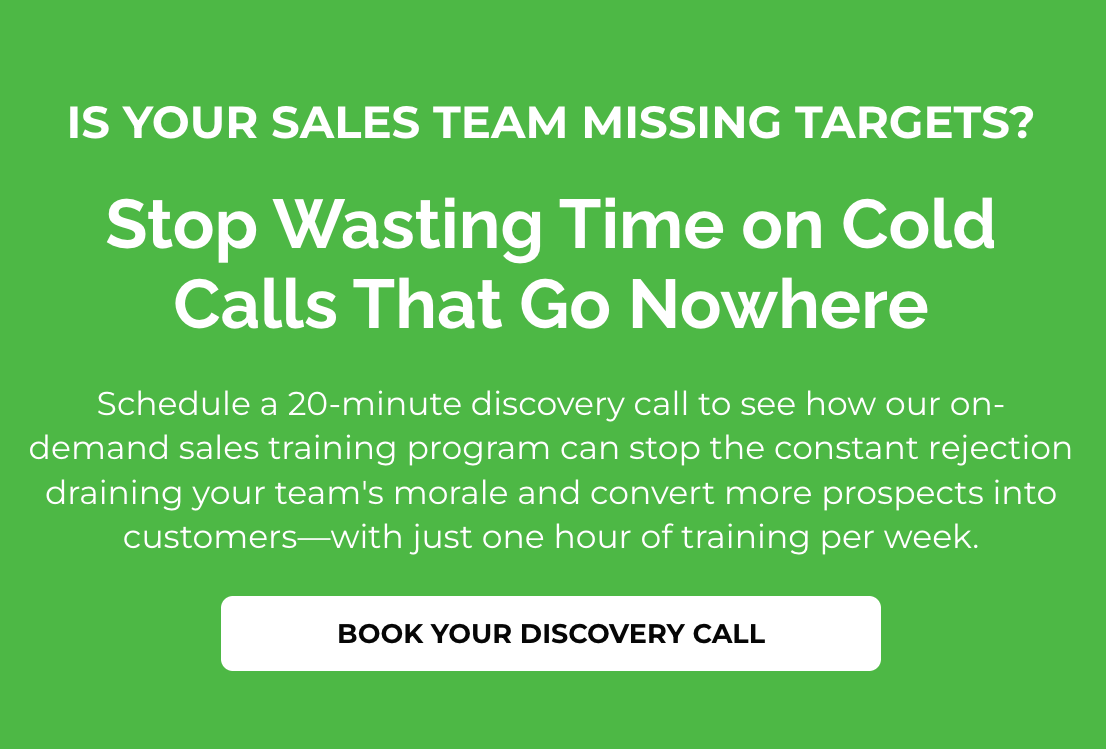Dealing With Sales Appointment No-Shows

Dealing With Sales Appointment No-Shows
“What should I do? How should I react when a prospect doesn’t attend a scheduled phone meeting?”
OK… quick question first:
Is this a FIRST-TIME CALL meeting (you or an appointment setter scheduled the call with the prospect), or is this a FOLLOW-UP CALL meeting (you’ve already spoken with the prospect and have progressed partway through the sales process, and a FOLLOW-UP CALL was required,?)
FIRST-TIME SALES CALL APPOINTMENT SETTING
If it was a first-time call meeting, who set the original appointment? Did you set it yourself, or was it set for you by an appointment setter?
If it was set by yourself, what was the initial call like? When you made the very first call to SET THE APPOINTMENT was your initial objective to do just that, set the appointment, (that would be a mistake, in my opinion) or did you go into that call with the intention to qualify first (make sure there’s a problem you can help them solve) and once that was established, then set the appointment? There’s a BIG difference.
If you simply called to get an appointment/schedule a call, chances are you skipped a major step.
The same goes if it was an appointment setter that scheduled the first call for you. If their primary goal was simply to “get a yes” to having a phone call with you, chances are they missed a key sales step.
Let’s break it down like this…
THREE REASONS WHY A PROSPECT BECOMES A “NO-SHOW”
- They don’t see the need/reason to meet/have a sales call with you. They don’t see the “WHAT’S IN IT FOR THEM”.
- Something legitimate came up and they had a scheduling conflict.
- They forgot.
You (or the original appointment setter) control 2 out of 3. I like those odds and so should you. The more that we control, the more say we have in our success.
So let’s discuss reason #1.
They don’t see the “WHAT’S IN IT FOR THEM”. (YES, I UNDERSTAND THAT THE QUESTION WAS WHAT SHOULD I DO IF THE PROSPECT DOESN’T SHOW UP… BUT I LIKE TO TEACH INSIDE SALES REPS HOW TO LOWER NO SHOWS FIRST)
If you (or an appointment setter) made the initial call and the objective was to set the appointment, in most cases, the WHAT’S IN IT FOR THEM step was skipped over. We went right for the “schedule a call” step and so even if the prospect agreed to it at first, there’s no real reason in their mind to keep it.
These calls usually go something like this:
“Hi (PROSPECT’S NAME) this is (YOUR NAME) with (YOUR COMPANY NAME). I wanted to reach out to you to see if we could set up a 15-minute meeting to discuss (BLAH, BLAH, BLAH). How does your calendar look on _____?”
Or
“Hi (PROSPECT’S NAME) this is (YOUR NAME) with (YOUR COMPANY NAME). I’m your new account manager and I just wanted to touch base with you and see if we could set up a meeting to review your account. How does _____ sound?”
These are common sales scripts used for appointment setting. They are used often yet rarely work, and when they do, the cancelation or “no-show” rate is high.
If your OBJECTIVE was to set the appointment, then I understand why you wanted to use this type of script. From your viewpoint, this seems like the most direct way to achieve what you are after.
But we are in sales. And part of our job is to contact prospects that may not be thinking about what we have to offer at that given moment. Therefore, we need to look at it from the PROSPECT’S perspective. Instead of approaching the call from what “you want”, try approaching it from “what would make them WANT to meet with you?”
When you do that, the initial appointment setting call might sound like this instead:
“Hi (PROSPECT’S NAME) this is (YOUR NAME) with (YOUR COMPANY NAME). The reason for my call is there’s a possibility we may be able to help you avoid/cut/reduce/lower (MAJOR PAIN POINT) but I would need to ask you a few questions first before I can be sure. Would you have a few minutes on ______ to discuss that or would now be better for you?”
OR
“Hi (PROSPECT’S NAME) this is (YOUR NAME) with (YOUR COMPANY NAME). The reason for my call is there’s a possibility we may be able to help you GAIN/IMPROVE/RAISE (MAJOR HOT BUTTON) but I would need to ask you a few questions first before I can be sure. Would you have a few minutes on ______ to discuss that or would now be better for you?”
By leading with a WHAT’S IN IT FOR THEM objective first, more prospects will want to keep the scheduled meeting with you.
Unless… #2 comes up… “Something legitimate came up and they had a scheduling conflict” and if that’s the case, no worries. As long as #1 was in place, a reschedule will most likely happen.
And then there’s #3. There’s no excuse for you to allow them to forget about the meeting. Yes, you sent them a calendar reminder and they even accepted it but still, if you want to minimize no-shows, make sure you call your prospects 2-days prior to the appointment call. Here’s the script you can use for that:
YOU: “Hi (Prospect) this is (YOUR NAME) with (YOUR COMPANY). I know we have a call scheduled for (DATE) and wanted to make sure we are still on for that. (SILENCE)
If they say “YES”, Great. If they say NO, find out if it’s a NO because they aren’t sure if it’s worth their time, and if so, handle it, or NO because they have a scheduling conflict.
This sales process will help reduce “no-shows”.
Now, if after all of that, they are a no-show, I use my 3-strikes and you are out rule.
So if I call on the time of the meeting and get voicemail, I leave a voicemail message that will spark interest. I’ll also send them an email related to the voicemail message I just left and more often than not, I’ll get an email back with an apology and a day/time for the reschedule.
If I didn’t hear back from them, I will make two more attempts, but after that, if we still failed to connect, I put them back into my drip marketing campaign and move on. I have zero desire to chase someone that doesn’t want to be caught.
FOLLOW-UP CALL APPOINTMENT SETTING
OK but what if it’s a FOLLOW-UP CALL appointment? Meaning, we’ve already started the sales process, did the presentation, and sent the proposal?
I still follow my steps above (the “three strikes and they are out” rule). I’ve found that having a system to follow (with bendable rules) produces better results than just “winging” it. No matter if it’s a first-time call or a follow-up call, if the prospect is a no-show, I’ll leave a WHAT’S IN IT FOR THEM REMINDER voicemail, followed by an email and I’ll do that for three attempts. If I don’t hear back, I move on and let my drip marketing take over. Of course, there are exceptions to the rule, but this has been a very profitable system for me to follow. If you aren’t happy with the results you are getting now, give this one a try.
– Michael Pedone

